The 8 Most Useless Stats in Today's Ever-Evolving NFL By Zach Kruse , NFL Analyst Jun 17, 2015 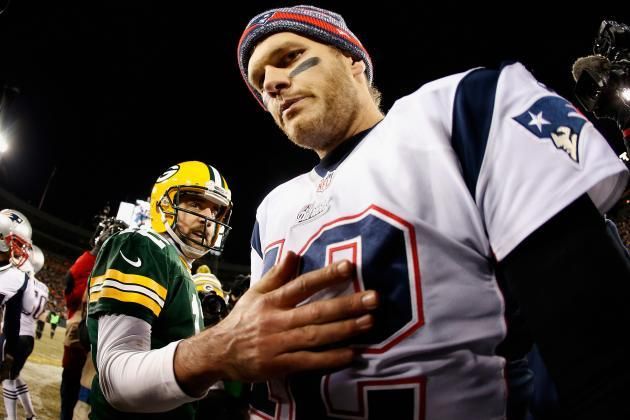 Christian Petersen/Getty Images The NFL isn't the megaindustry it is today without the help of statistics. The numbers of the game help provide context and understanding for coaches, media and fans alike, while also laying the groundwork for the lucrative and ever-growing fantasy business. But stats can also be misinterpreted, misunderstood and misused. Some stats are ingrained into the sport and full of use, while others are similarly rooted but lack any true meaning to the game.In the following slides, we will take a look at some of the most useless stats in the NFL today. These stats are widely known and referenced, but otherwise provide very little in understanding the game. Tackles
Christian Petersen/Getty Images The NFL isn't the megaindustry it is today without the help of statistics. The numbers of the game help provide context and understanding for coaches, media and fans alike, while also laying the groundwork for the lucrative and ever-growing fantasy business. But stats can also be misinterpreted, misunderstood and misused. Some stats are ingrained into the sport and full of use, while others are similarly rooted but lack any true meaning to the game.In the following slides, we will take a look at some of the most useless stats in the NFL today. These stats are widely known and referenced, but otherwise provide very little in understanding the game. Tackles Kevin C. Cox/Getty Images The existential problem with the tackle statistic is that not all tackles are created equal. In the box score, a tackle behind the line of scrimmage counts the same as a tackle made 30 yards down the field. The lack of appropriate context saps almost all use from the measure. Furthermore, the tackle statistic rewards those playing in a poor defense or at a particular position, based on nothing more than receiving extra opportunities. A safety playing behind a weak front might rack up meaningless tackles at the second level, while a middle linebacker is naturally around the football more. While tackles can show who is around the football most, the stat is completely unable to tally legitimate impact. Finally, tackles aren't even an official statistic. Home teams have trackers to tally the numbers. Tackle numbers rarely match reality. It's hard to trust anything about the stat. The Better Stat: StopsPro Football Focus has mostly rectified the problem. The site has created the "stop" metric, which PFF considers a tackle constituting an offensive failure. Make a tackle at the line of scrimmage on 2nd-and-4? PFF marks a stop. Trip up a receiver after a 25-yard catch? Not a stop.The addition of context makes PFF's statistic infinitely more valuable. Impact is important. And there's little question about the accuracy, as PFF's team takes several looks at every play.Quarterback Win-Loss Record
Kevin C. Cox/Getty Images The existential problem with the tackle statistic is that not all tackles are created equal. In the box score, a tackle behind the line of scrimmage counts the same as a tackle made 30 yards down the field. The lack of appropriate context saps almost all use from the measure. Furthermore, the tackle statistic rewards those playing in a poor defense or at a particular position, based on nothing more than receiving extra opportunities. A safety playing behind a weak front might rack up meaningless tackles at the second level, while a middle linebacker is naturally around the football more. While tackles can show who is around the football most, the stat is completely unable to tally legitimate impact. Finally, tackles aren't even an official statistic. Home teams have trackers to tally the numbers. Tackle numbers rarely match reality. It's hard to trust anything about the stat. The Better Stat: StopsPro Football Focus has mostly rectified the problem. The site has created the "stop" metric, which PFF considers a tackle constituting an offensive failure. Make a tackle at the line of scrimmage on 2nd-and-4? PFF marks a stop. Trip up a receiver after a 25-yard catch? Not a stop.The addition of context makes PFF's statistic infinitely more valuable. Impact is important. And there's little question about the accuracy, as PFF's team takes several looks at every play.Quarterback Win-Loss Record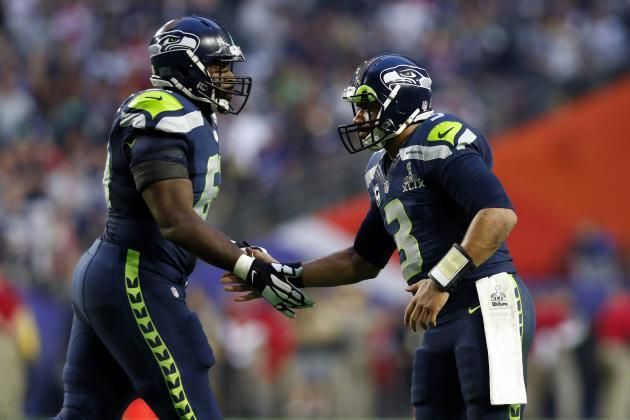 Matthew Emmons-USA TODAY Sports Quarterbacks touch the football on every play and are generally considered the most important players on the field. But to tally a win-loss record for one player within a game of 53 per team—with 11 from each side on the field at all times—is mostly ludicrous.There's nothing worse than hearing, "Russell Wilson is 22-2 at home since 2012." No, the Seattle Seahawks are 22-2 at home when Wilson starts at quarterback since 2012. The difference in the two statements is meaningful. Quarterbacks aren't playing alone. The Better Stat: Team Win-Loss RecordUnless football becomes a game of quarterback vs. 11 defenders, let's just forget win-loss records for one position and focus on the big picture. The Seahawks have been dominant in recent years in part because of Wilson's emergence at quarterback, but also because Marshawn Lynch can't be tackled and the Seattle defense is full of All-Pros. It takes a team to win a game with so many moving parts. Quarterbacks shouldn't have win-loss records. Passer Rating/QBR
Matthew Emmons-USA TODAY Sports Quarterbacks touch the football on every play and are generally considered the most important players on the field. But to tally a win-loss record for one player within a game of 53 per team—with 11 from each side on the field at all times—is mostly ludicrous.There's nothing worse than hearing, "Russell Wilson is 22-2 at home since 2012." No, the Seattle Seahawks are 22-2 at home when Wilson starts at quarterback since 2012. The difference in the two statements is meaningful. Quarterbacks aren't playing alone. The Better Stat: Team Win-Loss RecordUnless football becomes a game of quarterback vs. 11 defenders, let's just forget win-loss records for one position and focus on the big picture. The Seahawks have been dominant in recent years in part because of Wilson's emergence at quarterback, but also because Marshawn Lynch can't be tackled and the Seattle defense is full of All-Pros. It takes a team to win a game with so many moving parts. Quarterbacks shouldn't have win-loss records. Passer Rating/QBR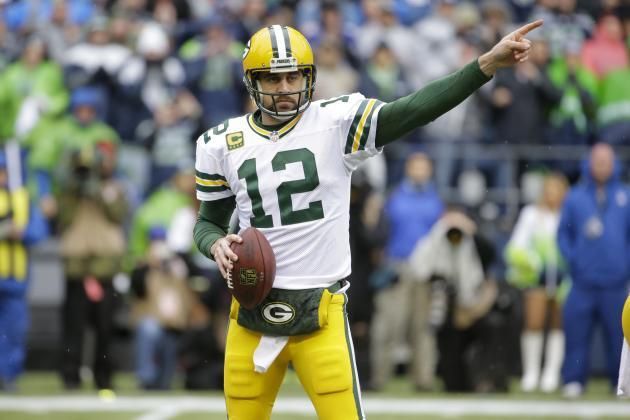 Ted S. Warren/Associated Press Passer rating can be a decent barometer of quarterback play. It rewards completions, yards per attempt and touchdowns and detracts for interceptions. Aaron Rodgers is the league's best quarterback, and he finishes near the top of passer rating every season. But the stat doesn't incorporate everything a quarterback does in a contest, and it's rather vague formula leaves something to be desired. "I think it's the most useless thing in sports, because it leaves too much out, and it doesn't take into account the system that you're running," former Super Bowl-winning coach Brian Billick told NFL.com back in 2012. "I don't know of anybody who uses that as a viable tool as a way of measuring quarterbacks, either by scouts or coaches." ESPN's QBR is a spin-off of passer rating, using other variables—including rushing and situation—to calculate a number on a more palatable 100-point scale. But then again, the formula is still so vague that it actually might be more difficult to digest than passer rating. Apparently, the only thing more difficult than playing quarterback is developing a stat capable of fully measuring it.The Better Stat: ?Passer rating is probably the best thing available right now. But when 158.3 is "perfect" and a 0-for-100 performance still grants a score of 39.6, you know it's a flawed metric. Passer rating still holds some value, but only because a significant improvement hasn't yet been developed. Punting Average
Ted S. Warren/Associated Press Passer rating can be a decent barometer of quarterback play. It rewards completions, yards per attempt and touchdowns and detracts for interceptions. Aaron Rodgers is the league's best quarterback, and he finishes near the top of passer rating every season. But the stat doesn't incorporate everything a quarterback does in a contest, and it's rather vague formula leaves something to be desired. "I think it's the most useless thing in sports, because it leaves too much out, and it doesn't take into account the system that you're running," former Super Bowl-winning coach Brian Billick told NFL.com back in 2012. "I don't know of anybody who uses that as a viable tool as a way of measuring quarterbacks, either by scouts or coaches." ESPN's QBR is a spin-off of passer rating, using other variables—including rushing and situation—to calculate a number on a more palatable 100-point scale. But then again, the formula is still so vague that it actually might be more difficult to digest than passer rating. Apparently, the only thing more difficult than playing quarterback is developing a stat capable of fully measuring it.The Better Stat: ?Passer rating is probably the best thing available right now. But when 158.3 is "perfect" and a 0-for-100 performance still grants a score of 39.6, you know it's a flawed metric. Passer rating still holds some value, but only because a significant improvement hasn't yet been developed. Punting Average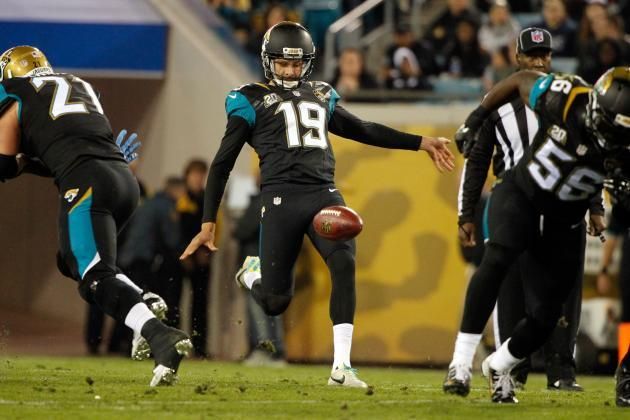 Kim Klement-USA TODAY Sports Maybe no stat in football is less significant than punting average, which tells nothing more than how far a particular punter can kick the ball. A higher average is assumed to be better, but an average tells us nothing about directional punting, pinning an offense inside the 20-yard line and all the other important aspects about the position.Punters already get little to no credit, but there's no need to rank them with a meaningless stat that has outkicked its coverage. The Better Stat: Net AverageWhile still far from perfect, net average does a better job of summing up how a punter handles his business. You can kick it a long ways, but if there's a big return, the net average is negatively (and more accurately) reflected. At some point, a clever statistician will come up with a number that takes into account field position and other important kicking variables. But the demand for more punting stats just isn't there. Passing Yards
Kim Klement-USA TODAY Sports Maybe no stat in football is less significant than punting average, which tells nothing more than how far a particular punter can kick the ball. A higher average is assumed to be better, but an average tells us nothing about directional punting, pinning an offense inside the 20-yard line and all the other important aspects about the position.Punters already get little to no credit, but there's no need to rank them with a meaningless stat that has outkicked its coverage. The Better Stat: Net AverageWhile still far from perfect, net average does a better job of summing up how a punter handles his business. You can kick it a long ways, but if there's a big return, the net average is negatively (and more accurately) reflected. At some point, a clever statistician will come up with a number that takes into account field position and other important kicking variables. But the demand for more punting stats just isn't there. Passing Yards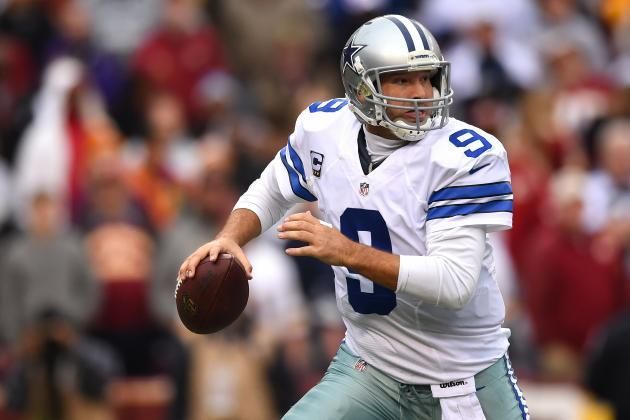 Smith/Getty Images During every season since 2012, at least three quarterbacks ranked within the top seven in passing yards have played for teams with a .500 record or worse. In 2012, the top three—Matthew Stafford, Tony Romo and Drew Brees—played on teams with a combined record of 19-29. A high volume of passing yards doesn't guarantee anything in the NFL. The trend can be seen on a game-by-game level, too. Of the 11 highest single-game passing yard totals from 2014, eight came in losing efforts. Oftentimes, a quarterback throws for a bunch of yards in a game in which his team is losing by a wide margin. When this happens many times in one season, a huge number of yards can be accumulated. The Better Stat: Yards Per AttemptQuarterbacks finished a game with a yards-per-attempt average of 10.0 or above 47 times last season (minimum 10 attempts). Those quarterbacks were on the winning side 42 times. The top six quarterbacks in yards per attempt last season—Romo, Aaron Rodgers, Ben Roethlisberger, Peyton Manning, Russell Wilson and Andrew Luck—played on teams that finished 70-26. A higher yards-per-attempt average is a good barometer for playing winning football at the quarterback position. Catch Rate
Smith/Getty Images During every season since 2012, at least three quarterbacks ranked within the top seven in passing yards have played for teams with a .500 record or worse. In 2012, the top three—Matthew Stafford, Tony Romo and Drew Brees—played on teams with a combined record of 19-29. A high volume of passing yards doesn't guarantee anything in the NFL. The trend can be seen on a game-by-game level, too. Of the 11 highest single-game passing yard totals from 2014, eight came in losing efforts. Oftentimes, a quarterback throws for a bunch of yards in a game in which his team is losing by a wide margin. When this happens many times in one season, a huge number of yards can be accumulated. The Better Stat: Yards Per AttemptQuarterbacks finished a game with a yards-per-attempt average of 10.0 or above 47 times last season (minimum 10 attempts). Those quarterbacks were on the winning side 42 times. The top six quarterbacks in yards per attempt last season—Romo, Aaron Rodgers, Ben Roethlisberger, Peyton Manning, Russell Wilson and Andrew Luck—played on teams that finished 70-26. A higher yards-per-attempt average is a good barometer for playing winning football at the quarterback position. Catch Rate Tommy Gilligan-USA TODAY Sports Catch rate sounds good in theory. Better receivers should be open more and thus targeted more. And good receivers should catch the majority of passes targeted at them. Unfortunately, catch rate ignores far too many variables. Buffalo Bills rookie receiver Sammy Watkins caught only 65 of his 124 targets last season, giving him a catch percentage (52.4) ranking near the bottom of qualified receivers. Are we then safe to assume Watkins is a terrible receiver and a megabust waiting to happen?Of course not. The Bills had poor quarterback play last season. According to Bleacher Report's Cian Fahey, 49 of Watkins' 124 targets were deemed uncatchable. That's an incredible number for one receiver. Now let's flip it around. Miami's rookie receiver Jarvis Landry caught 84 of his 105 targets, or 80 percent. Is he the next coming of Jerry Rice? Most likely not. Landry averaged 9.0 yards per reception and saw just three (yes, three) targets on passes traveling 20 yards in the air. He simply caught a bunch of short, easy-to-complete passes. Catch rate is fun to look at, but the stat requires the application of far too much context.The Better Stat: WR RatingAll receiving stats are reliant on a number of factors, so no one metric will be perfect. WR rating, or the passer rating of quarterbacks when targeting a certain receiver, is a little more helpful. The stat still relies on the quarterback heavily, but it can help separate receivers.For instance, New York Giants quarterbacks had a 127.7 passer rating when targeting Odell Beckham last season, but only a 73.7 rating when targeting Rueben Randle. Jordan Matthews (119.3) and Riley Cooper (66.8 in Philadelphia and T.Y. Hilton (112.0) and Reggie Wayne (67.2) in Indianapolis had similar splits. Time of Possession
Tommy Gilligan-USA TODAY Sports Catch rate sounds good in theory. Better receivers should be open more and thus targeted more. And good receivers should catch the majority of passes targeted at them. Unfortunately, catch rate ignores far too many variables. Buffalo Bills rookie receiver Sammy Watkins caught only 65 of his 124 targets last season, giving him a catch percentage (52.4) ranking near the bottom of qualified receivers. Are we then safe to assume Watkins is a terrible receiver and a megabust waiting to happen?Of course not. The Bills had poor quarterback play last season. According to Bleacher Report's Cian Fahey, 49 of Watkins' 124 targets were deemed uncatchable. That's an incredible number for one receiver. Now let's flip it around. Miami's rookie receiver Jarvis Landry caught 84 of his 105 targets, or 80 percent. Is he the next coming of Jerry Rice? Most likely not. Landry averaged 9.0 yards per reception and saw just three (yes, three) targets on passes traveling 20 yards in the air. He simply caught a bunch of short, easy-to-complete passes. Catch rate is fun to look at, but the stat requires the application of far too much context.The Better Stat: WR RatingAll receiving stats are reliant on a number of factors, so no one metric will be perfect. WR rating, or the passer rating of quarterbacks when targeting a certain receiver, is a little more helpful. The stat still relies on the quarterback heavily, but it can help separate receivers.For instance, New York Giants quarterbacks had a 127.7 passer rating when targeting Odell Beckham last season, but only a 73.7 rating when targeting Rueben Randle. Jordan Matthews (119.3) and Riley Cooper (66.8 in Philadelphia and T.Y. Hilton (112.0) and Reggie Wayne (67.2) in Indianapolis had similar splits. Time of Possession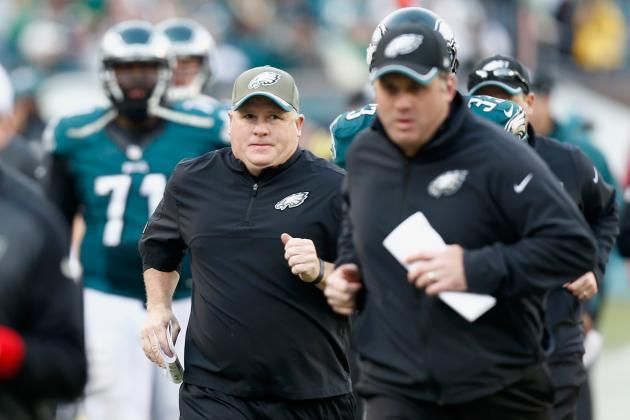 Jeff Zelevansky/Getty Images The top six teams in time of possession from last season made the playoffs. That's a big deal. But time of possession isn't the singular reason why; good teams convert more first downs and make more stops on defense, thus creating more time with the football. And winning doesn't require dominating the clock. Just ask Chip Kelly—whose Eagles finished dead last in time of possession in 2014—about the stat. “It’s about plays run," Kelly said, via Tim McManus of Philadelphia Magazine. "I have heard the question about time of possession…Time of possession is how much time can the other team waste." The Eagles finished third in the NFL in scoring last season. The Packers—the NFL's top-scoring offense last season—ranked 15th in time of possession, or six spots lower than the New York Jets, who scored over 200 fewer points than Green Bay. The Denver Broncos finished 11th, while the New England Patriots were 23rd. Time of possession is something, but it reveals almost nothing. It's an outdated stat lacking any sort of legitimate substance. The Better Stat: Points Per Possession Possessing the football means next to nothing if you don't do something with the opportunity. Holding the ball for 10 minutes and then throwing an interception in the end zone accomplishes nothing besides melting 10 minutes off the clock. Make your possessions count. Those who score more points per possession are generally the best offenses in the NFL. Penalties Per Game
Jeff Zelevansky/Getty Images The top six teams in time of possession from last season made the playoffs. That's a big deal. But time of possession isn't the singular reason why; good teams convert more first downs and make more stops on defense, thus creating more time with the football. And winning doesn't require dominating the clock. Just ask Chip Kelly—whose Eagles finished dead last in time of possession in 2014—about the stat. “It’s about plays run," Kelly said, via Tim McManus of Philadelphia Magazine. "I have heard the question about time of possession…Time of possession is how much time can the other team waste." The Eagles finished third in the NFL in scoring last season. The Packers—the NFL's top-scoring offense last season—ranked 15th in time of possession, or six spots lower than the New York Jets, who scored over 200 fewer points than Green Bay. The Denver Broncos finished 11th, while the New England Patriots were 23rd. Time of possession is something, but it reveals almost nothing. It's an outdated stat lacking any sort of legitimate substance. The Better Stat: Points Per Possession Possessing the football means next to nothing if you don't do something with the opportunity. Holding the ball for 10 minutes and then throwing an interception in the end zone accomplishes nothing besides melting 10 minutes off the clock. Make your possessions count. Those who score more points per possession are generally the best offenses in the NFL. Penalties Per Game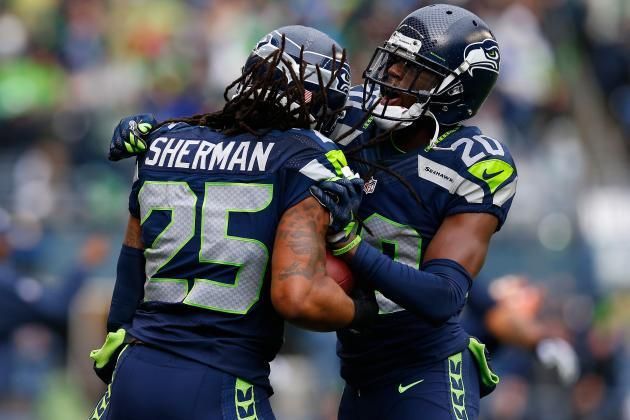 Tom Pennington/Getty Images No team has committed more penalties over the last two seasons than the Seahawks, who have also won 25 regular-season games and made back-to-back trips to the Super Bowl since 2013.Obviously, no team wants to commit penalties—it's giving away free yardage on defense and a complication on offense. But four of the 12 playoff teams from last season ranked in the bottom third of the NFL in penalties per game. Jacksonville committed the fewest and won just three games. Penalties aren't as significant as they are made out to be. The Better Stat: Penalty Yards Per PenaltyNot all penalties are created equal. A five-yard offsides infraction is nothing compared to a spot-foul pass interference penalty. The Seahawks led the NFL in penalties last season, but were ranked second in yards per penalty. There isn't a great penalty statistic available, but looking at the yardage per penalty gives a better indication of impact per infraction. link
Tom Pennington/Getty Images No team has committed more penalties over the last two seasons than the Seahawks, who have also won 25 regular-season games and made back-to-back trips to the Super Bowl since 2013.Obviously, no team wants to commit penalties—it's giving away free yardage on defense and a complication on offense. But four of the 12 playoff teams from last season ranked in the bottom third of the NFL in penalties per game. Jacksonville committed the fewest and won just three games. Penalties aren't as significant as they are made out to be. The Better Stat: Penalty Yards Per PenaltyNot all penalties are created equal. A five-yard offsides infraction is nothing compared to a spot-foul pass interference penalty. The Seahawks led the NFL in penalties last season, but were ranked second in yards per penalty. There isn't a great penalty statistic available, but looking at the yardage per penalty gives a better indication of impact per infraction. link
ForumVisual Realm2023-04-26T12:12:17-04:00
Notifications
Clear all
The Red Board
1
Posts
1
Users
0
Reactions
399
Views
Topic starter
Posted : Jun. 18, 2015 1:40 am
